Pressure gauges which have been calibrated to display the pressure over a negative and positive measurement range.
Products
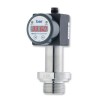 DS200P Sanitary Low Range Pressure Gauge, Switch and Sensor - All in one electronic switch, gauge and sensor designed specifically for use in the food, drink and biomedical industry for measuring process pressures.
DS200P Sanitary Low Range Pressure Gauge, Switch and Sensor - All in one electronic switch, gauge and sensor designed specifically for use in the food, drink and biomedical industry for measuring process pressures.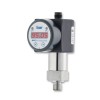 DS200 Combined Pressure Switch, Gauge and Sensor - Three in one electronic pressure switch, digital pressure gauge and pressure sensor with pressure ranges from 100 mbar up to 600 bar (1.5 to 9000 psi).
DS200 Combined Pressure Switch, Gauge and Sensor - Three in one electronic pressure switch, digital pressure gauge and pressure sensor with pressure ranges from 100 mbar up to 600 bar (1.5 to 9000 psi).
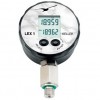 LEX1 (Ei) High Accuracy Digital Pressure Gauge
LEX1 (Ei) High Accuracy Digital Pressure Gauge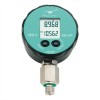 LEO3 Current or Digital Output Pressure Gauge
LEO3 Current or Digital Output Pressure Gauge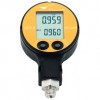 LEO 2 (Ei) Digital Manometer
LEO 2 (Ei) Digital Manometer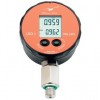 LEO1 (Ei) Digital Pressure Gauge
LEO1 (Ei) Digital Pressure Gauge
Applications
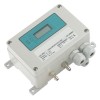 -0.1 to +0.1 inH2O g range 4-20mA signal air pressure sensor and display for pharmaceutical manufacturing use - A positive/negative gauge low range pressure sensor and digital display for pharmaceutical manufacturing use to measure pressure of air over a range of -0.1 to 0.1 inH2O g from the 6mm flexible tubing connection, and sending the corresponding 4-20mA signal through the M12 x 1.5 cable gland and internal screw terminal electrical connection.
-0.1 to +0.1 inH2O g range 4-20mA signal air pressure sensor and display for pharmaceutical manufacturing use - A positive/negative gauge low range pressure sensor and digital display for pharmaceutical manufacturing use to measure pressure of air over a range of -0.1 to 0.1 inH2O g from the 6mm flexible tubing connection, and sending the corresponding 4-20mA signal through the M12 x 1.5 cable gland and internal screw terminal electrical connection. Hastelloy diaphragm -100 to 50 kPa g range manometer - Small manometer device with membrane protected against corrosive material (chemicals) and which we would prefer to be covered with Hastelloy steel.
Hastelloy diaphragm -100 to 50 kPa g range manometer - Small manometer device with membrane protected against corrosive material (chemicals) and which we would prefer to be covered with Hastelloy steel.

